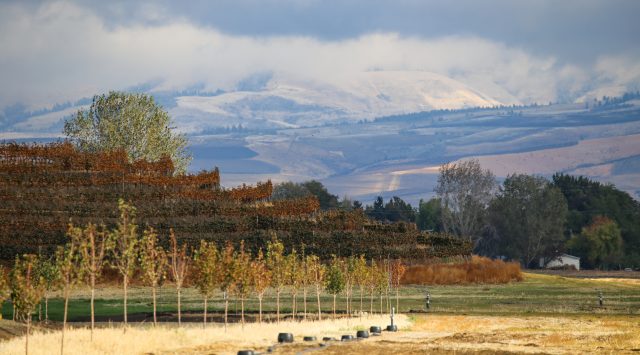This website uses cookies so that we can provide you with the best user experience possible. Cookie information is stored in your browser and performs functions such as recognising you when you return to our website and helping our team to understand which sections of the website you find most interesting and useful.
Tourism budget cuts set Washington wines back a decade
If consumers are more aware of wines from Oregon than from its neighbouring state Washington then it’s with good reason, and it has nothing to do with the wine, Ste. Michelle tells db.

“Within the US, each state has its own tourism promotion entity,” Ryan Pennington, director of communications for Ste. Michelle Wine Estates, told the drinks business. “In around 2008/2009, during the economic downturn, for budget cutting reasons Washington decided to disband its tourism offering.”
According to Pennington, up until a few years ago, Washington State was spending zero dollars on tourism, while more than US$30 million per year was being poured into the tourism sector in neighbouring Oregon.
Washington is now beginning to slowly claw back its tourism budget, which includes of course wine tourism, and the state currently spends around US$6 million per year, still a fraction of what Oregon has in the pot.
“We’re advocating for a dramatic increase in funding,” said Pennington, who said that in the absence of a lucrative tourism machine the Washington Wine Commission “does a great job of promoting the region”.
This discrepancy in tourism spend is one reason why Pennington sees great value in promoting the “Pacific North-West” region as a whole.
“We think there is real opportunity to promote the Pacific North-West collectively,” he said.”When you think of the American wine landscape, it’s predominantly California. Once we introduce people to the idea of the Pacific North-West then we can start to break it down and explain the typicities of different states.”
Ste. Michelle is a major player across both states, having acquired Erath Winery in Oregon’s Wilamette Valley in 2007. It owns more than 12,140 hectares of vineyards in Washington.
“Now, combined, we represent more than 30% of production in Oregon and 50%-60% of production in Washington,” said Pennington.
“We are just starting down this road but because of our increased footprint in Oregon, we are now the leader in the Pacific North-West so we have every reason in the world to promote the Pacific North-West collectively.”
The wine group’s internal research found that Oregon currently has a “higher baseline of existing awareness than Washington” but Pennington says that international investment is helping, with wineries including Duckhorn, Jackson Family Wines, Rioja producer Valdemar and Tuscany’s Antinori family, all snapping up Washington vineyards in recent years.
Pennington revealed that Ste. Michelle is looking to add more acreage in Oregon. “We could take more fruit right away but because of a recent rollercoaster of vintages, finding growers we can partner with who are willing to make the investment to plant is challenging,” he said.
The wine group is also keeping an eye out for “premium properties in Napa” to expand its interests there.

